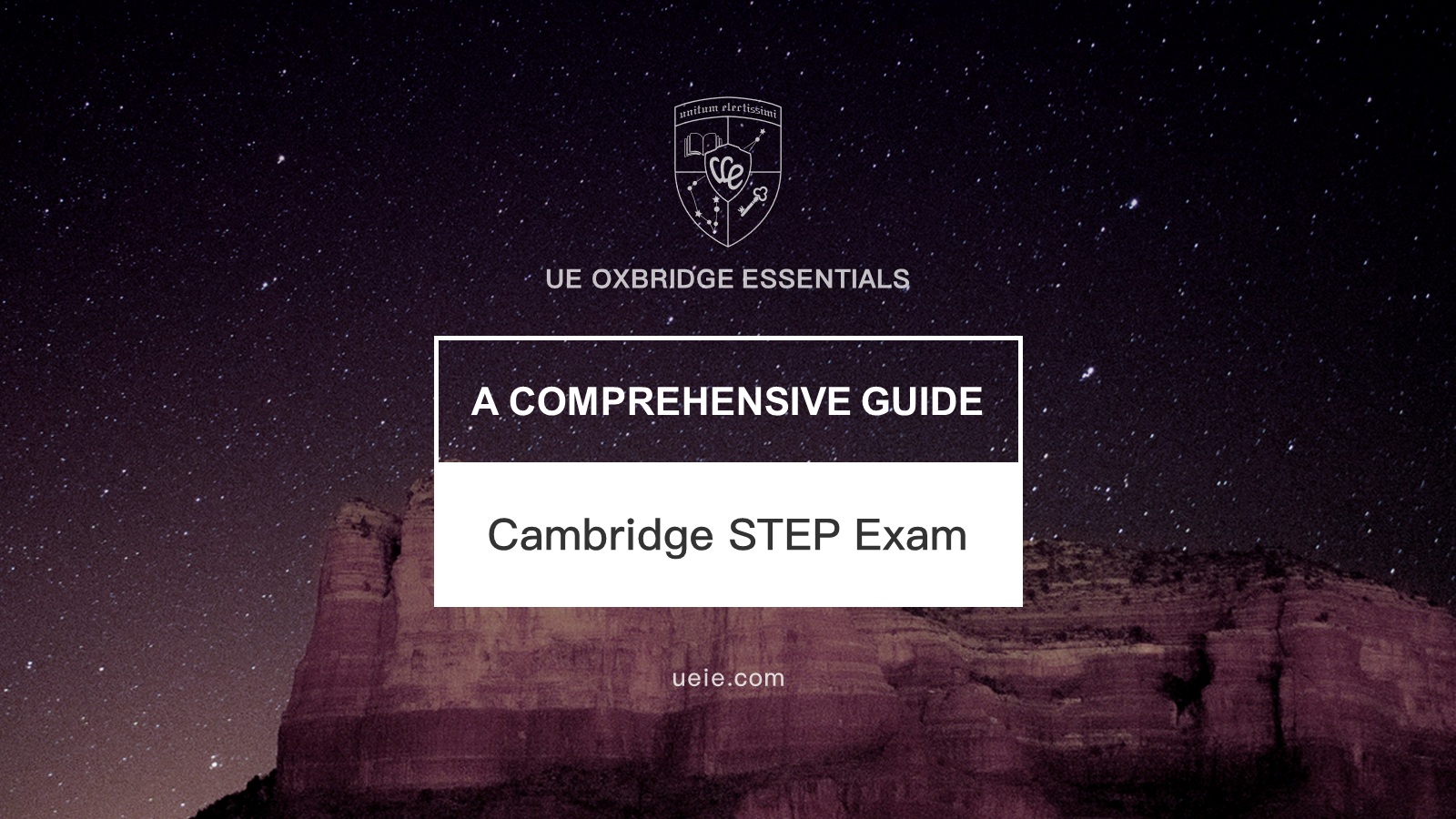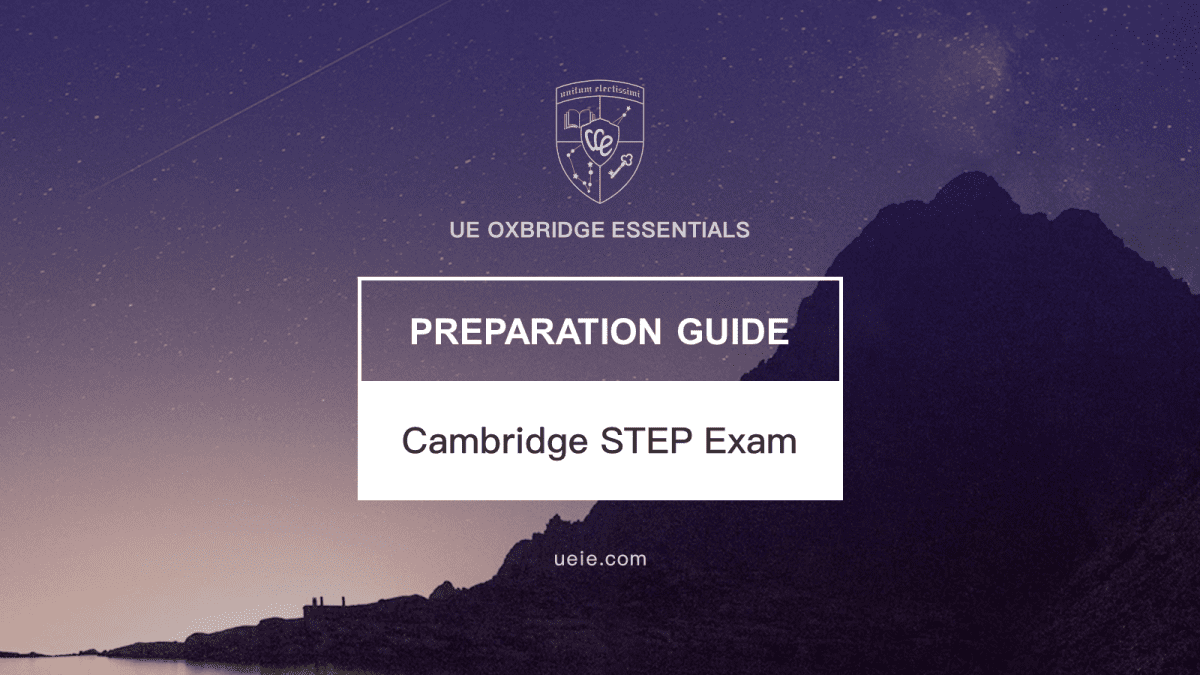I. What is Cambridge STEP Exam?
The acronym STEP stands for Sixth Term Examination Paper. It is a test designed to evaluate students’ mathematical skills, and it is taken in the final year of school before university.
Till 2023, the test was organized by the group Cambridge Assessment Admissions Testing (CAAT). From 2024 onwards, another group, the OCR Examination Board, has taken over the administration of STEP.
STEP is a mandatory part of the application process for students who choose courses like mathematics, computer science, and other related subjects at top-notch universities in the UK, such as the University of Cambridge, the University of Warwick, and Imperial College London. Although the University of Oxford does not require STEP scores for maths and computer science courses, Oxford officially recommends that applicants take the STEP exams.
II. Key Dates for STEP 2024
March 1st, 2024
Please note: OCR reserves the rights to make changes to these dates.
Special reminder: Please make proper arrangements in advance in case of possible conflicts with A-Level exams.
III. Registration Process
i. Students must enroll in an approved exam center to sign up for the STEP exam:
- If the applicant’s school is authorized, they can register and take the STEP exam there.
- If the applicant’s school is not authorized, they can enroll as independent candidates on the official website of the British Council (China).
- In some cities, some organizations enroll independent students and organize STEP exams.
ii. Candidates are required to submit the following information at the time of registration:
- Name, gender, date of birth, and UCAS number.
- The chosen University, course, and the code of the course.
- If particular care is required for physical reasons, relevant supporting documents must be submitted together.
IV. What are the Changes in the 2024 Examination Policy?
In 2024, the STEM exam rules are the same as in 2023, which are:
- Only STEP 2 and 3 exams will be taken, and the STEP 1 exams has no longer been offered.
- Still using the 2021 version of the syllabus, continuing the important reforms of 2019.
- STEP 1 topics will be included in STEP 2 and STEP 3 exams.
- Continue to be open to all candidates (students without an offer can also sit the exam).
- Bilingual dictionaries were no longer permitted.
Remember, these rules may change, so it is better to monitor updates. Oxford, Cambridge, and RSA examination boards keep the right to change the rules for the 2024 STEP exam.
V. Which Universities and Courses Require the STEP Exam?
1. University of Cambridge
Courses
UCAS Code
G100
Mathematics with Physics
G100
Typically, Cambridge requires grade 1 or higher STEP scores for conditional offers. All Colleges require at least grade 1 in two STEP papers (STEP 2 and 3) for the Mathematics course.
- Since 2018, the Cambridge Natural Sciences (UCAS Code: BCF0) course has no longer required STEP, but the NSAA is required now.
- Since 2019, the Cambridge Computer Science (UCAS Code: G400 BA/CS) course has no longer required STEP, but the TMUA is required now.
- Since 2024, the Cambridge Economics (UCAS Code: L100) course has no longer required STEP, but the TMUA is required now; and the Cambridge Engineering (UCAS Code: H100) course has no longer required STEP, but the ESAT is required now.
2. University of Warwick
Courses
UCAS Code
G100
In addition, the University of Warwick has changed the admission test requirements for 2025 entry. MAT scores are no longer accepted, and students are required with TMUA scores. If there is no TMUA score, it can be replaced by a STEP grade 2 or above. Before 2024, the University of Warwick required a TMUA score of 6.5 or above, but the requirement for 2025 entry has yet to be released. For details, please visit the official website of the University of Warwick.
Since 2018, the following Warwick courses no longer require STEP:
- Mathematics and Business Studies (UCAS Code: G1NC)
- Mathematics and Economics (UCAS Code: GL11)
3. Imperial College London
Courses
UCAS Code
MAT is usually required for Maths-related courses at Imperial College London, and conditional offers to post-15 applicants who were unable to take MAT will include a STEP requirement.
Generally, Imperial’s minimum STEP offer is a Grade 2 in either the STEP II or STEP III papers. Both the grade and the number of papers may be increased in some cases.
In addition, some MAT candidates with a borderline mark may be considered for a STEP offer, which may also be increased.
4. Other Universities that require STEP (or MAT, TMUA) include:
- University College London (UCL)
- University of Bristol
- University of Bath
- King’s College London
For mathematics, computer science, and other related courses at Oxford University, candidates are required to take the MAT (Mathematics Admissions Test) exam. Although STEP scores are not one of the requirements for admission, Oxford also encourages candidates to take STEP exams and provide their scores to fully assess their academic abilities.
To apply to Oxford, Cambridge, and other universities, you must regularly check their official website and admission criteria.
For a detailed comparison between STEP and MAT, please refer to the blog:
VI. What is the Exam Format?
1. Basic Information
[1]As STEP questions rarely require the simple recall of complex formulae, the use of formulae booklets was discontinued in 2019. Where a particular formula is needed, and it is not considered reasonable to expect you to recall or derive it, it will be included in the question.
2. Question Types
The STEP 1 exam has been canceled in 2021, and only the STEP 2 and STEP 3 exams are offered.
The questions are all numeracy questions, and candidates only need to choose 6 out of 12 questions from the paper to answer.
Since the 2019 reforms, the number of questions in the STEP 2 and 3 papers has been reduced from 13 to 12, as shown in the table below:
VII. Past STEP Exam Papers
Click below to browse the collection of past STEP 2 and STEP 3 exam papers.
You may download our collections of past papers via the test prep page as follows.
VIII. What is the Scoring Method?
1. Scoring Method
Candidates answer six questions, each with 20 marks, for a full paper of 120 marks.
There is no limit to the number of questions a candidate may answer, although only six questions are required. When a candidate answers more than six questions, marks will be awarded for each question, but only the six questions with the highest marks will be considered for the total marks.
2. Grade levels
3. Historical Grade Standards
The critical thing to know is that although maximum marks and grade levels are the same for STEP 2 and STEP 3, the score thresholds for each level are different for each exam each year.
The historical grade distribution and percentage of candidates can be checked by clicking on the image below.
IX. What is covered in the exam?
In 2019, the STEP exam underwent profound changes to align with the updates to the A Level curriculum. Here are some changes:
- The STEP exam content was updated according to the content of A-level courses set by the Department of Education.
- The number of questions in STEP 2 and 3 has been reduced from 13 to 12.
- The question style remains the same. This means you can still use past papers for practice.
The 2024 STEP exam will follow the 2023 STEP exam style. There will be a minor change in the mechanic section. All other sections will remain the same except for the use of bilingual dictionaries.
X. How to prepare for the STEP Exam?
For information on preparing for the STEP exam, please refer to:




